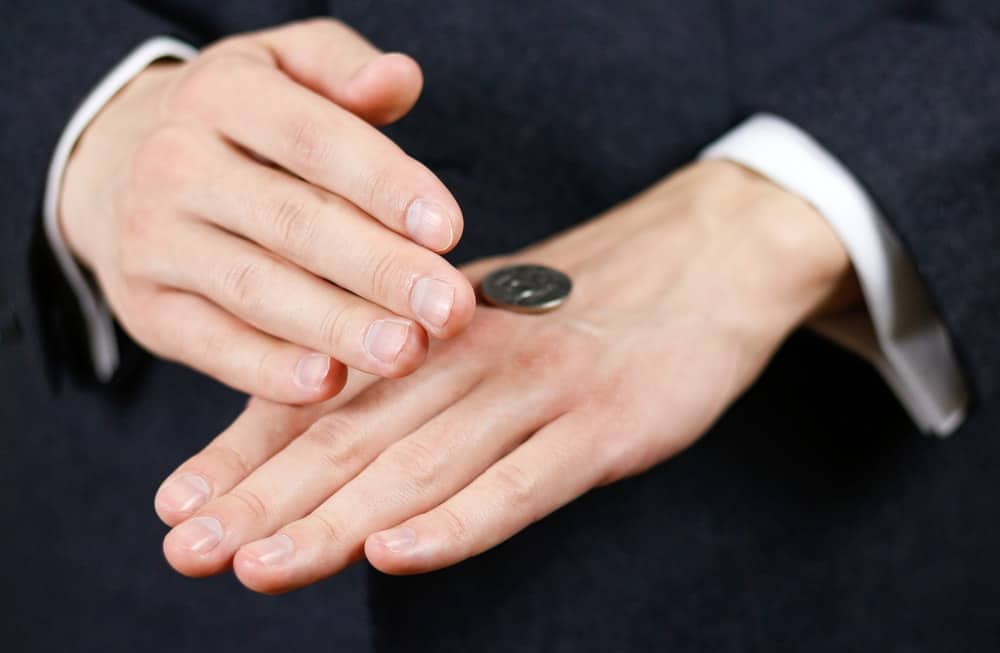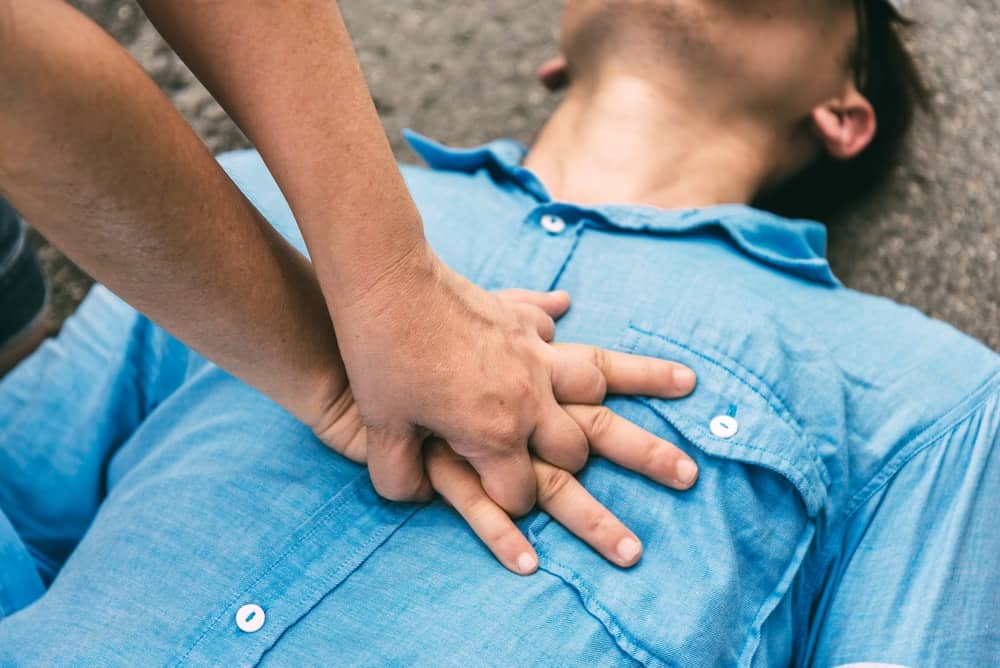When we talk about a probability, we talk about how something is likely to happen. The idea of probability is much to do about studying chances. It’s a part of mathematics that ascertains how one event might or might not happen.
Probability, however, is just a guide so studying it will not guarantee something happening. Tossing a coin and throwing dices are two of the most common examples.
Basic Types of Probability
Classical Probability

This is a very common type of probability and can be demonstrated most easily by considering what happens when you roll a pair of dice or toss a coin in the air. When a referee tosses a coin at the beginning of a football game, and it lands on the field, only two possibilities will occur, heads or tails.
The odds of it falling on a certain side can be calculated by determining all of the possible outcomes (in this case, only two), and then, by recording what actually happened each time you tossed that coin. In other words, you can toss the coin 10, 20, or 50 times, then write down what each outcome was, and you can determine what the classical probability of a certain outcome is.
In classical probability, you are declaring that in every experiment involving statistics, there are going to be elements that each have the same chance of happening. If you roll one die, which has six sides, the chances are equal that it will land on one of the six numbers, just like a coin toss is going to result in the same probability of ending up on either tails or heads every time. In other words, the probability is equal to the number of favorable outcomes divided by the number of possible outcomes.
Conditional Probability
This type of probably considers a group of events that are, in essence, dependent on one another. It looks at things such as past performance, which normally influences performances later on, so that the probability of that specific performance can be determined. In other words, it looks at the whole picture and takes into consideration what has happened in the past to determine what might happen in the future. Conditional probability measures the likelihood of a particular situation happening whereby another even has occurred, either by evidence, assumption, or assertion.
Let’s say that on any given day, the likelihood that an individual might have a sore throat is 5%. That is all well and good, but if you assume or know for a fact that that individual is suffering with the flu, you already know that the conditional probability of him or her also having a sore throat is much more likely. It can be described like this: the likely of ABC happening under the circumstances known as XYZ, or P(ABC/XYZ), where P stands for probability, and ABC and XYZ are the two events. In the above example, the chance that the individual with the flu is also suffering with a sore throat can go up to 75%.
Experimental Probability
The experimental probability of something happening is determined by two things. First, the total number of trials has to be considered. Second, the total number of outcomes is taken into consideration. If you roll a quarter 100 times and it lands on tails 40 of those times, your theoretical probability is going to be 40/100, or 0.4. This probability describes the number of times a certain outcome happened divided by the number of trials that were performed.
Markov Chain Probability
With similarities to conditional probability, a Markov chain probability looks at sequences of events and the fact that each of these probabilities depends on what happened in a prior event or even a set of events. If it is snowing outside, and you’re wondering if it is still going to be snowing an hour or three hours from now, you can base your guess on how much it is snowing in that first hour.
Markov chain probability uses matrixes to gain more efficiency in the probability, and it can be used in determining everything from specific weather patterns to how well your stocks will perform. Whatever you are discussing, be it football scores or certain numbers or letters, there is always a finite number of states involved, and it is always determined by (1) the current state (e.g., it is snowing outside), and (2) the amount of time that has elapsed (e.g., one hour).
Markov chain probabilities always consist of a set of transitions. These transitions are determined by a probability distribution that satisfies the Markov property, or the property of a stochastic process that is known as “memoryless.”
Personal (Subjective) Probability
This is perhaps the least reliable type of probability because it is based on someone’s personal judgment and reasoning. With subjective, or personal probability, the probability is based on an outcome that an individual expects to happen. No formal calculations or interpretations are used, but the probability essentially centers around one person’s feelings and knowledge on the subject.
For instance, if you’re watching a basketball or hockey game with some friends, you may declare at the beginning of the game that Team A will win. This assumption may be based on the fact that you want that particular team to win, but it can also be based on things such as their current rankings. In any case, subjective probability involves both basic facts and the person’s subjective opinions to form a statement that you think that certain team is going to win.
Relative Frequency Interpretation of Probability
In the relative frequency interpretation of probability, you start by conducting a certain experiment many different times, and then base the relative frequency on the actual measurements or on the observation itself. For example, if you roll a die 50 times and the number four comes up 15 times, the relative frequency of the number four is 15/50.
Standard Probability
Probability always involves comparing how many possible outcomes there are to how many times a certain outcome might occur within that total number. With standard probability, you have to look at specific events whereby the first event never affects the second or third event’s outcome.
Theoretical Probability
This is one of the easiest ways to determine the probability of something happening. It is based on the possible chances of XYZ happening. If you’re trying to figure out the theoretical probability that a coin is going to land on either heads or tails, you have to first know that only these two possibilities will occur.
In the tossing of a coin, there are only two possibilities, heads or tails, and, therefore, the theoretical probability that your coin toss will result in the coin landing on heads is one in two, which is also demonstrated as 1:2. You’re taking into consideration the number of options (in this case, two) and basing the theoretical possibility on that premise. If the coin had three sides and heads was one of the three possibilities, landing on heads would be a one-in-three possibility, or 1:3, in this instance.
Another way to look at theoretical probability is to say that the possibility of something happening is equal. A die has six sides, and when you roll one so you can view the result, you can say that all six sides have an equal chance of appearing.
Unconditional Probability
This type of probability refers to the single independent chance that a single outcome will result from a total sample of outcomes that are possible. If you want to find an event’s unconditional probability, you can add the sum of the outcomes of that particular event, then divide by the total number of outcomes possible. If you are viewing a group of people and select someone at random, this means each person in that group has the same odds of being chosen. If you decide to select a woman, or an individual within a certain age range, the odds are, quite naturally, a little different.
Certain Probabilities That Everyone Should Be Aware Of
Terrorism in Detail

You are less likely to be the bombing victim of a terrorist than you are of being hit by a dangerous asteroid; in fact, the latter is 1,860 times more like to happen.
Speaking of Coin Tosses

Coin toss possibilities are often used as examples of certain probabilities, but the chances that you will roll the dice 100 times and end up with tails 50 of those times and 50 times with heads is roughly 8%.
Baby Teeth

Here’s an interesting statistic: one in every 2,000-3,000 babies is born with a tooth already in his or her mouth!
Male versus Female Cancers

Although testicular cancer is scary for men to think about, the truth is that they are more likely to die of breast cancer than testicular cancer, and yes, men do get breast cancer.
CPR Redefined

If you have to receive CPR at some point in your life, the chances that you’ll be back to your old self three months after the event is only about 3%.
Too Much Time in the Sun

Because nearly 100% of all melanomas are caused by sunburn, you have a 66% chance of getting cancer if you live in Australia, where people spend a lot of time in the sun, and you live to be 70 years old.
Shark Attack

Although your chances are only one in 11.5 million of being attacked by a shark, that is still more likely to happen than you winning a Powerball contest, which is only a one in 175-million chance.
Happy, Happy Birthday to You!

People are more likely to die on their birthday than on any of the other 364 days of the year.
Monopoly, Anyone?

When playing the game Monopoly, you have less than a two-percent chance (to be exact, the chances are 1.15%) of landing on any of the five most valuable properties on your very first roll. These properties include North Carolina Avenue, Pennsylvania Avenue, Boardwalk, Park Place, and Pacific Avenue.
America’s Favorite Pastime

Here is another interesting sports statistic: an adult baseball fan has a one in 9.77 chance of being a New York Yankees fan.
Sharing a Birthday

In a room with only 60 people in it, the chances of finding two people with the same birthday is roughly 90%. That number only goes down to 50% when you have as few as 23 people in the same room. Try it for yourself, if you don’t believe it.
Lightning Strikes Less Often Than You Think

In the United States, the chance of being struck by lightning during your lifetime is one in 3,000; however, the chances that you’ll make a full recovery from this attack is placed at over 90%.
Gambling 101

A woman in New Jersey rolled the dice 154 times continuously while playing craps without losing, which naturally broke a world record. The probability of this happening? Roughly one in 5.6-billion.
Speaking of Gambling …
There’s a one in 9 chance of rolling a 2, 3, or 12 on your first roll when playing craps, which means you lose.
A Controversial Subject

Just in case you think being armed protects you better from gun violence: the per-capita death toll in the November 2015 attacks in Paris is still less than the average per-capita number of people killed by guns in any given month in the United States.
Date with a Supermodel, Anyone?

Your chances of dating a supermodel are seven times higher than getting a royal flush when playing poker, with the odds of the former being one in 88,000 and the latter being roughly one in 650,000.
Does Your Cat Want to Kill You?

This one is a bit odd, but here it goes. In an 11-year period, dogs shot their owners a total of ten times, while there was only one incident of a cat shooting its owner. There’s an unusual statistic for you!
Glossary of Probability Terms
Complementary Events: Complementary events are those events with probabilities that add up to the number one. If one event only occurs when the other does not, they are both considered complementary events.
Event: This describes a subset of outcomes in a particular process.
Experiment: This is an action that usually results in outcomes which are well-defined in nature. Each separate outcome is known as an event.
Favorable Event: A favorable event refers to the outcomes that make the happening of a particular event in a trial necessary. For example, if you are trying to get a total of four points by throwing two dice, there are four ways to do this, so four is the favorable event because you have four chances of your dice adding up to the number four.
Odds: The ratio of the likelihood of a certain event as compared to the likelihood of its complement. In other words, the ratio of likely outcomes compared to the unlikely ones.
Outcomes: These refer to the possible results of a certain event. If you toss a quarter on the floor, the possible outcomes are heads and tails.
Probability: The measurement of a certain event’s likelihood of occurring. Probably is equal to the number of favorable outcomes divided by the number of possible outcomes.
Random Experiments: If you are conducting an experiment in which all of the outcomes that are possible are known but cannot be predicted beforehand, this is known as a random experiment. When you toss a die at random, you cannot know beforehand which number it will land on, so tossing a die is considered a random experiment.
Sample Space: In a random experiment, the set of all of the possible outcomes is called the sample space; therefore, the sample space of a coin toss consists of heads and tails.
Trial: Performing a random experiment is an act known as a trial.
What are the Odds Of?
A man believes it is okay to have sex on the first date: 1 in 5 (for women: 1 in 50).
A man under the age of 50 being afraid of spiders: 1 in 83.
A man under the age of 50 having had no sexual partners in his lifetime: 1 in 36.
A small child dying due to an accident involving a balloon: 1 in 30,350,000.
Becoming a billionaire: 1 in 7,000,000.
Becoming a professional athlete: 1 in 22,000.
Becoming blind after receiving laser surgery in your eyes: 1 in 85,714.
Becoming president of the United States: 1 in 10,000,000.
Being arrested while you’re driving under the influence: 1 in 200.
Being audited by the federal government: 1 in 175.
Being born with 11 toes or fingers: 1 in 500.
Being injured by a pogo stick and having to go to the hospital: 1 in 115,300.
Being the victim of a violent crime: 1 in 20.
Dying from an injury in the next 12 months: 1 in 1,820.
Dying from fireworks: 1 in 616,488.
Dying in a plane crash: 1 in 354,319.
Dying in a vehicle accident: 1 in 4,000-8,000.
Finding a pearl in an oyster: 1 in 12,000.
Getting cancer: 1 in 3.
Winning an Oscar (if you’re in the field): 1 in 11,500.

